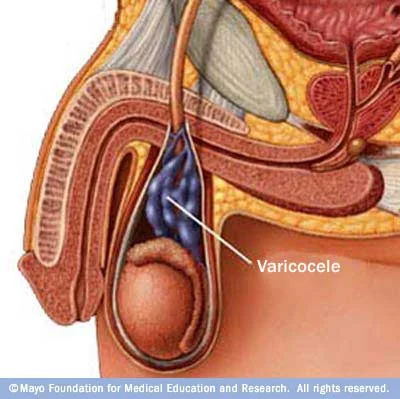What is a varicocele?
/A varicocele is inflammation or swelling that occurs in the scrotum. It is when the veins in the scrotum become enlarged. They are most common among males between the ages of 15 and 25 years old. They also usually occur on the left side of the scrotum (left testicle). About 15 to 20 percent of males in the United States have varicoceles.
Varicoceles can cause a man to have a low sperm production or a decrease in sperm quality. This can lead to infertility problems. However, this does not always happen with varicoceles. Varicoceles may also cause the testicles to shrink or develop abnormally.
The risk factors for developing a varicocele include being a male between the ages of 15 and 25 years old. Males between this age group have the highest risk. Other risk factors include having had kidney cancer, an inguinal hernia, vascular disease, mumps, or epididymitis.
Varicoceles do not always cause signs or symptoms. But if they do, the most common symptoms is pain associated with the inflammation or swelling in the scrotum. The pain may either feel like a dull pain or a sharp pain. It may also get worse when standing up or during physical activity, especially during long periods of time. The pain may also get worse throughout the day. By lying down on your back, the pain may be relieved.
Varicoceles are often found incidentally, meaning they are found when a doctor is searching for another condition. They are often discovered when your doctor is doing an evaluation for fertility or during a routine physical examination. They do not often require treatment because they usually do not cause any symptoms that affect a person’s lifestyle. However, if the varicocele is causing extreme pain, discomfort, or swelling in the scrotum, it may require treatment. Your doctor may recommend treatment may if there is a mass on the scrotum, the testicles appear to be different sizes, you are a young male who has developed a varicocele, or the varicocele is causing infertility problems.
Treatment options for varicoceles may include anti-inflammatory medication, surgery, or percutaneous embolization. Anti-inflammatory medications are given to ease the swelling and pain associated with the varicocele. Surgery is done in order to cut off blood flow to the varicocele. Percutaneous embolization is a nonsurgical procedure in which a catheter is inserted into the vein and a balloon, coil, or medication is placed in the varicocele, blocking the blood flow.

